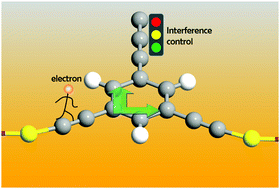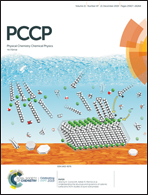Driving interference control by side carbon chains in molecular and two-dimensional nano-constrictions†
Abstract
The quantum interference effect offers a unique route to control the charge transport through nanoscale constrictions. The carbon atomic chain, which is an sp-hybridized carbon allotrope, has recently stimulated interest to construct ultimate nano-devices. Instead of using the carbon atomic chain as an electron transmitting channel interconnecting nano-components, we explore the possibility of using side carbon chains to change the phase of the transmitting electrons and influence the interference pattern of the nano-device. Interference pattern modulation is a general phenomenon which is demonstrated in a benzene molecular device, a zigzag graphene nanoribbon device and a SiC nanoribbon device. Odd–even oscillation dependence of the conductance on the length of the side carbon chain is found. Two criteria, i.e. large magnitude of the local state in the side carbon chain and proper length of the side carbon chain, must be satisfied simultaneously to achieve effective interference modulation. By carefully choosing the position and length of the side carbon chains, the transmission zero can be moved to the Fermi energy. Moreover, the transmission zero induced by destructive interference at the Fermi energy can be very robust against strain. This work provides a new possibility to construct nano-devices with carbon atomic chains.

- This article is part of the themed collection: 2019 PCCP HOT Articles


 Please wait while we load your content...
Please wait while we load your content...